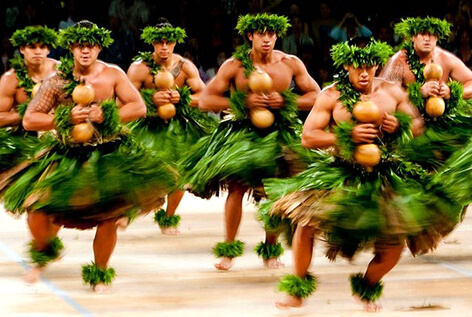Hula can be performed with chants or current music. And its pace can be leisurely and nostalgic or rapid and energetic. Regardless of style, it is all part of the cultural practice of presenting a treasure trove of stories. They connect dancers and spectators to the source of Hawaiian ancestral wisdom. Hula brings history, genealogy, prophecy, and the stories of those who have gone before us to life.
Dance is only one component of the practice for hula dancers who connect more deeply through their hula traditions. This usually includes environmental stewardship. For example, there could be a reciprocal relationship in which dancers care for the trees. They give them ferns, maile, and other materials to make lei and costumes that liven up the show. The practices differ from halau to halau. They all, however, seek to create a tangible, personal connection between the dancers. And the story about which he or she is dancing. More than that, the legendary origins of hula.
A Living Tradition: Hula
Hula has a variety of origins. With several traditions providing various beginnings of the art. It exemplifies the Hawaiian sensitivity for different perspectives. And in a way that isn’t mutually exclusive.
Hula kahiko (ancient hula) and hula auana (modern hula) are two hula styles (modern hula).To simply identify the two as ancient and modern, on the other hand, minimizes the contrasts and overlooks crucial differences.
Hula kahiko is usually performed as part of or as an extension of a ceremony. It’s written for percussion instruments and set to an oli (chant). While many of the oli we hear accompanying hula kahiko are composed by past generations. Today, new oli and hulas are also being made. The adjective “ancient” implies that hula is a static art form. Rather, hula kahiko has deep historical roots and thrives in current Hawaii.
Hula auana is a less formal style of hula.They did it without ceremony. Around the beginning of the century, more new hula in this less formal style began to emerge. To narrate a story, they use a song and stringed instruments like as guitar, bass, steel guitar, and ukulele.
Enjoy Hula in Hawaii with respect.
Hula dancers practice for years with the physical intensity of professional athletes before performing in public. On the other hand, the academic rigor of doctorate students under the supervision of a Kumu hula (hula teacher). As a result, it is critical to enjoy a performance appropriately.
If you watch a hula performance as part of a ceremony, keep in mind that it may not be intended for public consumption. You must maintain a respectful distance to ensure the event’s solemnity. Aside from that, you must remain silent, refrain from taking photos or video, and follow any other instructions. Even if they don’t inform you, it’s courteous to maintain a respectful distance.
Hula is a Pacific dance tradition.
Despite being one of several Pacific dance traditions, hula is distinctively Hawaiian. Hula is frequently done in conjunction with the Samoan fire dance, Tahitian otea. They also do it with Maori haka, most notably at Hawaiian luaus. However, hula should not be confused with the traditions of other civilizations.

Hula dance courses in Honolulu?